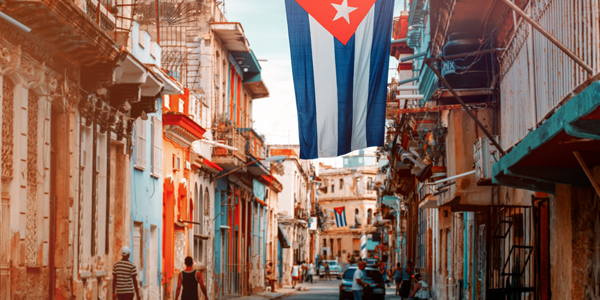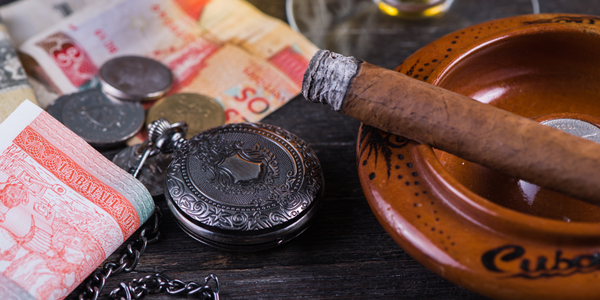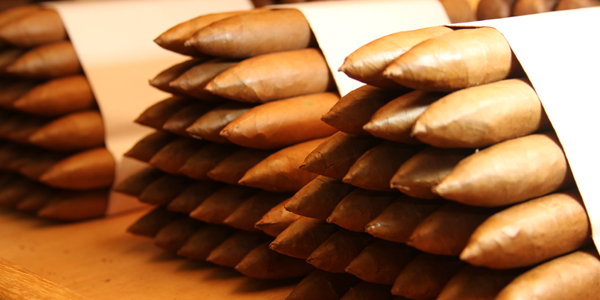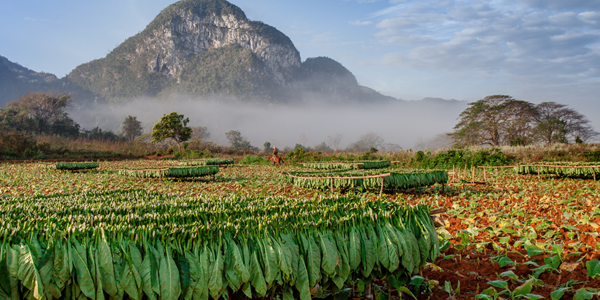Cigar Tourist Activities in Cuba
Since we last wrote about visiting Cuba, getting there from the US has become more restricted. Essentially, US Treasury Department regulations say a US citizen is barred from spending money in Cuba if that expenditure would support the Cuban government. Well, it’s hard to imagine that buying cigars, the production of which is controlled by the Cuban state, wouldn’t violate that edict, but for now it’s still legal to bring back Cuban cigars. The new regulations stress that US visitors to Cuba spend their money at quasi-private establishments. Stay in private homes, eat at ‘paladares’ (restaurants in private homes). But you will want to visit places that have to do with cigars. Assuming you can get to Cuba, just go and visit them. One note of caution. You’re likely to be approached outside of these museums by people trying to sell you cigars at a great “bargain.” Just don’t buy them.
We’ve already written about visiting the tobacco-growing region of Cuba and how to buy cigars in Cuba, but you really can get a lot out of going on a cigar tour. Here’s how.
DIY
Some cigar factories in Cuba still allow visitors to stop by and take a guided tour. In the case of the Romeo y Julieta/H. Upmann factory, you’ll have to get the tickets, usually around US $12 at all the factories, at your hotel or a tourist office. The government sets the ticket price. This factory is a short walk from the capitol building. You’ll see – wait for it – people making cigars! In Cuba, one person makes a cigar from beginning to end. There is no division between buncher and roller as in Nicaragua, Honduras and the Dominican Republic.
This factory, one of Cuba’s largest, makes all of the country’s H. Upmann cigars, some Montecristos and Romeo y Julietas, as well as some Cohiba vitolas. More than 200 torcedores (rollers) are at work here. Look to your left when you enter to see a gorgeous old marble staircase. Some of the rollers might try to sell you individual cigars. Don’t risk buying them. Security guards are always around. You can buy next door at the new-ish La Casa del Habano and enjoy a Cuban coffee or rum. Padre Varela, between Desagüe & Peñal Verno, Central Habana, tel. 07/878-1059 or 07/879-3927, 9am-1pm
The “new” Partagás factory is perhaps the best-known among tourists. It’s more than 170 years old, but cigars are no longer made there. That’s now happening at the new factory about a block from the Romeo y Julieta factory. This used to be where El Rey del Mundo cigars were rolled. Today, more than 200 rollers make more than 20,000 cigars every day. Of course, that includes Partagás, but also La Gloria Cubana, Ramon Allones, Quai d’Orsay and Bolivar brands.
You’ll see every facet of cigar making here, from removing the stems in the leaves to the rolling of the cigars and the packing of the boxes. Calle Luceña, corner of Penalver, Central Havana
The “old” Partagás factory has no tours. If any rolling is going on, it’s just for show, but it’s worth a stop to glimpse what might be available at the cigar shop there. Calle Industria #520, between Dragones & Barcelona, Old Havana, tel. 07/862-0086 or 07/878-4368
The La Corona factory is home to the Cuaba, Hoyo de Monterrey, Punch, San Cristóbal, Flor de Cano and Por Larrañaga brands. This is the best place to see the quality-control tasting process in the morning. There are cubicles in a tasting room for each taster. They arrive early to assure that they’re tasting with a fresh palate. Avda. 20 de Mayo #520, between Marta Abreu & Línea, Cerro, tel. 07/873-0131, Mon.-Fri. 9am-11am and 1pm-3pm
The flagship Cohiba is made at the El Laguito factory, housed in an old mansion in the once-swank Miramar section of Havana. This factory, perhaps the most beautiful of all, is not generally open to the public. It’s like, “ya gotta know a guy,” (see Tours below). If you can arrange a visit, you’ll note the trademark yellow-gold paint around the place. There’s a large curving staircase and small salons on either side of the foyer that serve as rolling rooms, lighted by the sunshine coming in through the tall windows. The quality-control inspectors do their work in a building with a chimney painted yellow next to the mansion, in a room where a poster of Che Guevara is hanging. There’s also a “Drawmaster” machine to test the draw quality of a cigar and make sure it’s not plugged. Those are pretty much in every Cuban cigar factory. (And yet, you might ask, why are so many Cuban cigars still plugged?) This is not the best of tours. Much of the cigar process is not seen. No aging rooms, fermentation, or storage. Other than that, you see people rolling cigars. Avda. 146, no. 2121, Miramar, Havana
Tours
While I’ve always gone on my own to the factories, there are tour companies that friends have used that they liked. One is Havana Adventures. This is part of a larger Australian travel company and it operates legally within US government guidelines. That means you can pay them. Prices start at $45 per person for a larger group, and go up to $100 for one person. The “Cigar Trail” tour is three hours long and starts in the morning. The tour includes a visit to the new Partagás cigar factory, usually one of the big three listed above, a cigar shop, the cigar museum in Old Havana, and, at the end, “we’ll walk through Old Havana to the Artisan Palace to enjoy the perfect ‘marriage’ of a Cuban cigar, a Cuban coffee, and a Cuban rum….”
Nick Syris is a good man to know because he is encyclopedic about nearly everything having to do with Cuban cigars. Syris is part of a pair that runs Cigar Tours to Cuba. The factory included in the tour is usually the Romeo y Julieta facility, but Syris said he can sometimes get a small group into El Laguito. Syris’ tour is all-inclusive and gets you from Miami to Havana for 5 days. The website lists the cost as $2700 and includes accommodations in private houses (in keeping with US regs) and all meals. Take a look at Cigar Tours to Cuba and you’ll see that the tour takes you to Pinar del Rio for a plantation tour and meeting with a master roller in Havana. The tour, Syris said, is “predominantly about cigars,” but does include other cultural aspects. Importantly, it also includes cigars and cocktails on the patio at the Hotel Nacional, something you should do on your own in any case.
I’m not endorsing any tour company because I haven’t used one, but if you can do a little research, a tour company could save you some time and headaches if it’s good.
The Cigar Museum
I’m ambivalent about The Cigar Museum. The stuff you can see is pretty rudimentary. I mean, it’s old, but it’ll take you about 10 minutes if you’re really dallying. The part of this place that would be interesting is if you can talk to the woman who runs the place, Zoe Nocedo Primo. She has been there two decades and runs classes about everything cigar-related in Cuba. She’ll tell you, unequivocally, that Cuban tobacco is (still) the best in the world. If you have a chance to chat with her, you’ll learn a lot. I’m not sure if she speaks English. Have a translator handy. After you visit, hit the La Casa del Habano downstairs. Mecaderes, no. 120, between Obispo & Obrapía, Old Havana, tel: (537) 8615795
Hemingway Drank Here
Yeah, not Mariel Hemingway so much, but her grandfather Ernest. The legendary author would have his daiquiris at El Floridita and his mojitos at La Bodeguita del Medio. Okay, that might be myth, but in any case, you should definitely grab a daiquiri at El Floridita in Old Havana and have a cigar while you sip it. It’s among the best throwback atmospheres in Havana to have a puff.
Ya Gotta Eat (and Smoke a Cigar)
To make sure you’re not violating US laws, you’ll probably want to focus on eating at the private restaurants – paladares – that Havana offers. Here are some at which you can smoke. One of the older paladares is La Guarida in Central Havana. The food, depending on what’s available, is quite tasty. The place is stylish, with white and pink furniture, and a lavender wall surrounding the small bar. The best thing about La Guarida is the rooftop terrace. Take a Double Corona up there with you and your favorite rum, and let the view sink in.
The Otramanera (which means “another way”) paladar is in Miramar. Great food, excellent cocktails, and as soon as you take your cigar out of your pocket, the staff puts a proper cigar ashtray on the table. Sit on the terrace in the front yard.
Finally, if it’s smoke on the water you’re looking for, go to the Rio Mar restaurant, also in Miramar (which means ‘sea view’). Order fish. The dining terrace is right above the water and you can see the Malecon (Havana’s seaside esplanade).
Beyond all this, Havana is a pretty cigar-friendly place. There are some very nice parks and it’s fun just to stroll around while you enjoy a cigar. And if you speak Spanish, you can get a lot out of meeting people along the way.






